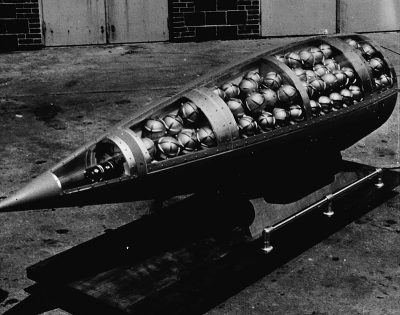Left with Few Tanks and Ammunition, Ukraine Puts Its Hope in Cluster Munitions

All Global Research articles can be read in 51 languages by activating the Translate Website button below the author’s name.
To receive Global Research’s Daily Newsletter (selected articles), click here.
Click the share button above to email/forward this article to your friends and colleagues. Follow us on Instagram and Twitter and subscribe to our Telegram Channel. Feel free to repost and share widely Global Research articles.
***
The Ukrainian military lacks tanks, armoured vehicles, and ammunition to dislodge Russian forces from their well-entrenched positions, demonstrating that over half a year of planning and training for the current counteroffensive has dissipated into complete failure. The situation for Ukraine is so bad that it was even forced to withdraw its German-made Leopard 2 tanks from the front lines so they could be preserved for the future. This revelation comes as the Biden administration announced on July 6 that it would send cluster munitions to Ukraine.
According to the Wall Street Journal,
“Ukraine is now attempting to dislodge an entrenched enemy, one of the most daunting operations any military can undertake. Russian troops have spent months building physical defences that include bunkers, tank traps and mine fields.”
The same outlet quoted Lt. Col. Oleksiy Telehin of Ukraine’s 108th Territorial Defence Brigade as saying that it was not only impossible to destroy well-prepared positions before advancing but that Ukrainian forces were suffering from a shortage of armoured vehicles, with infantry forced to advance on foot, which makes it vulnerable to flanking manoeuvres.
The Ukrainian military has only managed to capture a few villages in Zaporozhye and the Donetsk People’s Republic (DPR). A month of fighting has resulted in only the capture of some villages and failure to reach Russia’s first defensive line, and more disturbingly, at the cost of thousands of deaths and hundreds of destroyed tanks and armoured vehicles.
Ukrainian personnel admit to horrific losses, with soldiers “presumably in Zaporozhye, saying they could have lost dozens of men” in a single attack.
“We had to evacuate the evacuation team,” said a 19-year-old combat medical professional, according to the US outlet. The teenager also recalled a case where a mortar hit his vehicle during an evacuation of the wounded.
According to reports, Russian helicopters fly less than 8 kilometres from Ukrainian positions, which should ordinarily make them vulnerable to air defences, but as a platoon commander from the 108th Brigade said, “We don’t have proper air defence systems to deal with the threat. When we’re warned that an enemy plane has taken off, the only way to deal with it is to take cover.”
The Russian Defence Ministry reported on July 9 that since the beginning of the special military operation, their forces have destroyed from Ukraine 453 planes, 241 helicopters, 4,948 unmanned aerial vehicles, 426 air defence missile systems, 10,604 tanks and other armoured fighting vehicles, 1,137 fighting vehicles equipped with MLRS, 5,396 field artillery cannons and mortars, as well as 11,547 special military motor vehicles.
In the face of these major losses, the US will supply Kiev with cluster bombs even though this will do nothing to change the balance of forces, mainly due to the Ukrainian military’s lack of training and adequate experience of its officers.
“I can confirm from personal experience that cluster munitions are indeed quite powerful, but also that by themselves they will not tilt the balance of power in the war towards Ukraine,” retired US lieutenant colonel Daniel Davis wrote in an article on 19FortyFive
According to Davis, the Armed Forces of Ukraine will not be able to benefit from these munitions due to insufficient training, officers’ lack of experience and lack of time to create cohesive and equipped combined arms formations.
“Regardless of how much more lethal they are than standard 155 mm HE rounds, [cluster munitions] will not make a difference in the outcome of the current offensive. The cluster rounds will increase the lethality of Ukrainian gunners against the Russian enemies, but alone cannot change the course of the war. The same, sadly, will be true of F-16s and long-range missiles which may be provided later this year,” he added.
One of the Pentagon representatives, Patrick Ryder, claims that the enhanced conventional dual-purpose munitions (DPICM) that Washington will supply to Kiev have a non-detonation rate of less than 2.35%. The percentage of failure, non-detonation, means that they will remain active in the location and could explode after civilians, including children, pass through.
Due to the risk that these weapons pose to civilians, 123 countries adopted in 2008 a convention that prohibits the use of cluster munitions since it is estimated that more than half of the victims of these munitions are civilians. Yet, with the Ukrainian military lacking any weapon to push back Russian forces, the delivery of cluster munitions is just a signal of the desperate situation it finds itself in.
*
Note to readers: Please click the share button above. Follow us on Instagram and Twitter and subscribe to our Telegram Channel. Feel free to repost and share widely Global Research articles.
Ahmed Adel is a Cairo-based geopolitics and political economy researcher.
Featured image is from InfoBrics

